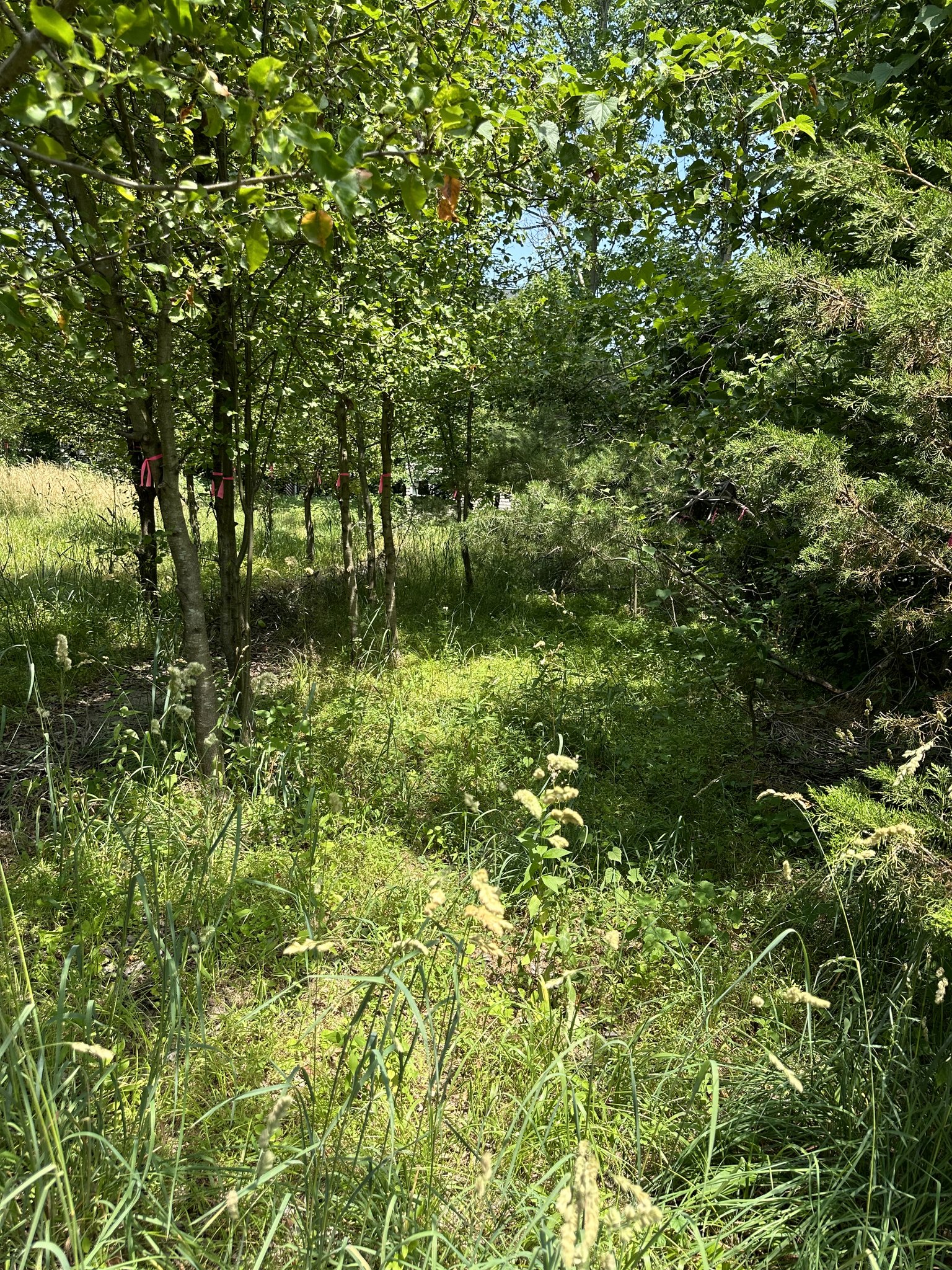Department of Forestry community forester Jacob Zielinski, finds RREHOA’s project trees already forming buds during a visit to the project site
Virginia’s Department of Forestry strives to see many more native trees planted in the Commonwealth. For the second year in a row, they are willing to give money away to make that happen. DOF has $800,000 in Trees for Clean Water Grant (TCW) money to award in 2024, for projects from $1,000 up to $50,000 per applicant. Under the grant program last year, DOF awarded 58 grants totaling nearly $853,000 across the Commonwealth. Two of the grantees were located in Fairfax County: the Town of Herndon, and the Ridge Road Estates Home Owners Association (RREHOA) in Springfield. So, contrary to the old adage, money does grow on trees.
The program was “established to encourage the creation of long-term, sustained canopy cover to improve water quality across the Commonwealth. This grant is used to fund tree-planting efforts that raise public awareness of the benefits of trees and impacts on water quality,” according to the Department of Forestry. Projects could include: riparian buffers, community or street tree plantings, neighborhood-wide projects, converting turf-to-trees, and tree giveaways, or other similar projects. Funds, which are paid on a reimbursement basis, can be used to cover site and soil preparation and amendment, fees of contractors or consultants, purchase of trees and shrubs up to two calibers, essential materials, and maintenance expenses including watering during the grant period.
 RREHOA’s common area field before the project has a significant number of non-native Callery Pear trees and required mowing maintenance
RREHOA’s common area field before the project has a significant number of non-native Callery Pear trees and required mowing maintenance
Who is eligible to apply? This is not a program for individual home owners. Grants may be awarded to civic groups, communities, local government, non-profit organizations, neighborhood associations, public educational institutions, state agencies, tribal organizations, and volunteer groups. Some match of awarded funds is expected and can include in-kind and volunteer hours. Applications are accepted electronically at https://dof.virginia.gov/urban-community-forestry/urban-forestry-community-assistance/virginia-trees-for-clean-water-grant-program/
The Town of Herndon used its nearly $21,000 grant to replace trees along their Bruce Court area, a few on Center Street and at the Town Hall. Town Arborist Nick Maletta explained that they planted 36 trees in total, with the majority replacing invasive Bradford Pear trees along Bruce Court. The existing trees had been dropping branches and interfering with overhead power lines for some time. While the Town spent maintenance funds for contracted service to remove the existing problem trees, which were not native, the grant provided the funds for their replacement. Maletta selected a mix of overstory and under-story tree species in his plan to accommodate the power lines at the site. Nearby residents had input through in-person meetings and social media. He describes only two hurdles encountered: having to compromise on one or two tree placements for resident considerations, and the lack of availability of some preferred tree species during the available planting period. Maleta says, “the more people who take advantage of the money to plant, the community will only benefit.” He hopes to apply again this year.
Must you have a professional arborist available to take on a project? Ridge Road Estates HOA would say no, but you do need a few dedicated volunteers. The RREHOA’s project targeting an open field common area started with removal of 42 Bradford Pear trees, along with a few species of other invasive vines and plants. They used grant funds to plant 16 large new native trees and shrubs. These planting join 37 seedlings planted three years ago in a density meant to eventually shade out grasses, eliminating the maintenance previously required to mow turf grass. Their $7,300 award project was lead by a resident Virginia Master Naturalist and aided by a small group of volunteers who took on many of the site preparation and tree maintenance tasks. They used grant funds for contractor service in planting the large trees. The neighborhood’s children joined in to help with site maintenance, such as gathering non-native tree seeds to prevent them from spouting, and gathering brush to form habitat. The HOA was able to complete their grant fund matching obligation fully with volunteer hours. (For more on the grant program and the HOA’s efforts, see Springfield Connection, November 16-22, pg 8-9)
A recent visit by DOF community forester Jacob Zielinski found the RREHOA project area and tree plantings “looking good” with some minimal deer predation, from which the shrubs are likely to recover. New trees are already forming buds. Zielinski estimates they might only need another week to open if milder temperatures continue. The HOA’s selection of species, including Dogwood, Eastern Redbud, Fringe Tree, Red Buckeye, and Elderberry and Spicebush, promise a notable bloom display and the ability to attract the pollinating insects which favor them.
If your group would like to apply, applications must be submitted 30 days prior to the estimated planting date for Spring and Fall planting periods at the link provided above.
